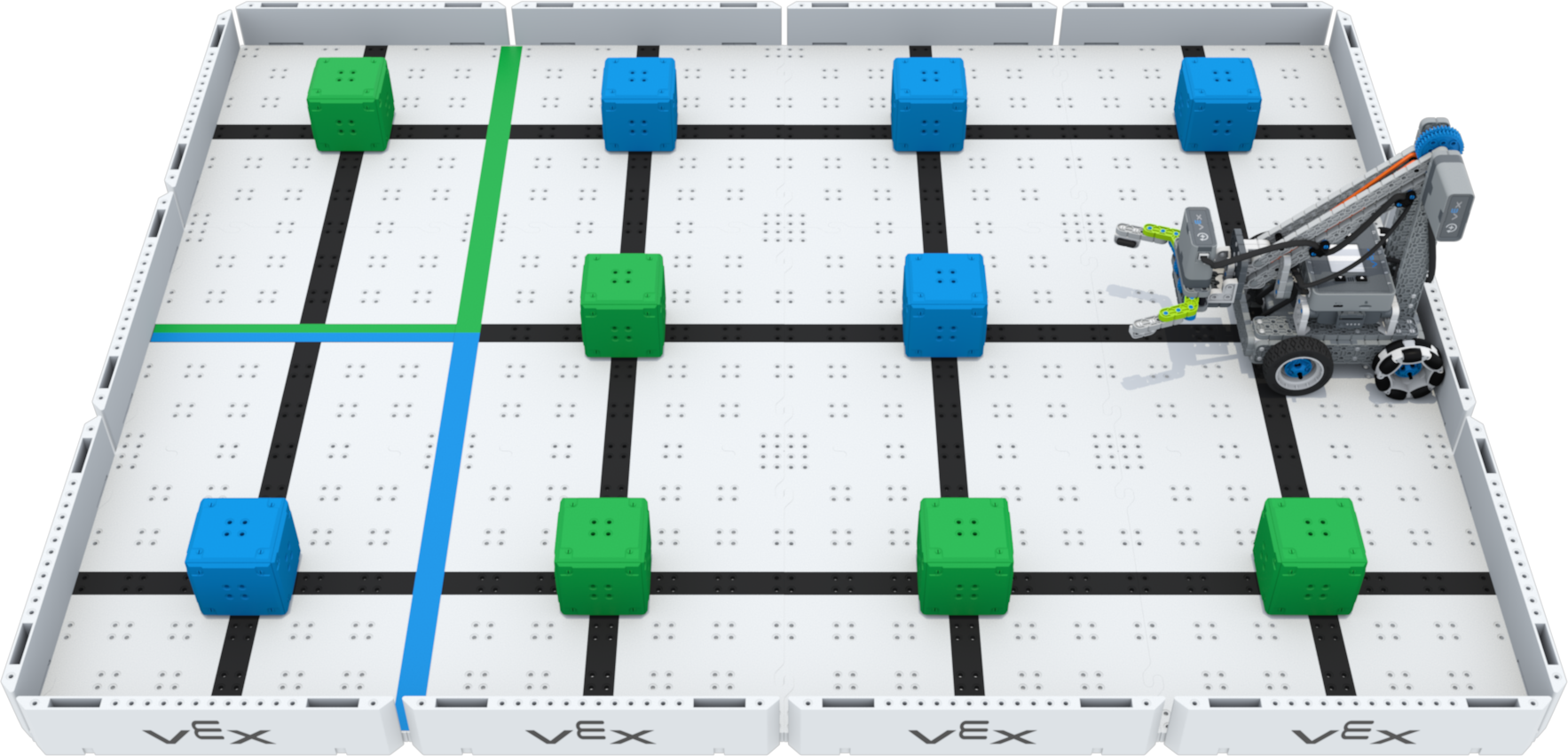Compete
Now it is time to compete in the Cube Collector competition! Cube Collector is played in one 1-minute autonomous run and one 90-second driver control run. Score the most points by collecting cubes and placing them in their matching scoring zone on the Field. Watch the video below to learn the process you can use to apply all the things you have previously learned to the Cube Collector competition.
Understanding the Rules
Cube Collector is a two part challenge where one run is autonomous, and the other is played using driver control. The object of the game is to collect and score cubes by placing them in the matching scoring zone on the Field. Combine the score in both runs to determine your total score.
You and your team can apply the engineering design process to your robot, your code, and driver control strategy to maximize your score.
In the animation below, an IQ Clawbot is positioned in the middle of the right wall on a 3 x 4 Field with two scoring zones on the far left: a green one at the top and a blue one at the bottom. Each scoring zone has a matching colored cube attached, and eight additional cubes (four blue, four green) are placed at Field line intersections. A timer and a Brain icon, indicating autonomous competition, are displayed.
After a countdown, the Clawbot drives forward, then picks up and stacks a blue cube in the blue scoring zone. The video briefly fades to signify time passing. Next, the Clawbot places the last blue cube in the blue scoring zone. The autonomous phase score is tallied, then the icon switches to a Controller for the driving phase, where the Clawbot sorts and stacks cubes until time runs out and the final score is tallied.
There are many strategies you can use to compete successfully in the Cube Collector competition. Watch the animation here to see one example of Cube Collector gameplay in action!
Read this document to analyze and interpret the rules for the competition. Google Doc / .docx / .pdf
As you read the rules, think about how you can use them to develop a game strategy for the autonomous and driver control runs. Remember to use data from the Lesson 4 practice and challenge activities to help you develop your strategies.

Check Your Understanding
Before moving on to the next video, ensure that you understand the rules of the competition by answering the questions in the document below in your engineering notebook.
Check Your Understanding questions Google Doc / .docx / .pdf
Applying the Engineering Design Process
Watch this video about the engineering design process to see how to walk through the steps to continue to develop and iterate on your game strategy, code, or robot design for the Cube Collector competition.
Collaborative Decision-Making
As you work through the engineering design process, you will need to communicate with your team members. Watch this video to see examples of good communication that you can use while you make decisions with your team.
Select < Return to Lessons to go back to the Lesson Overview.
Select Next > to reflect on what you have learned and done throughout this Lesson.